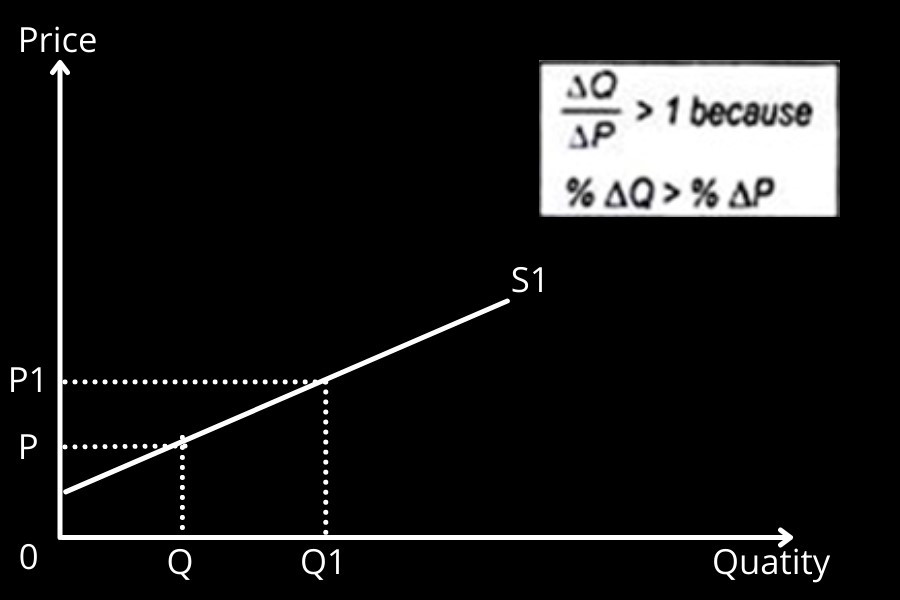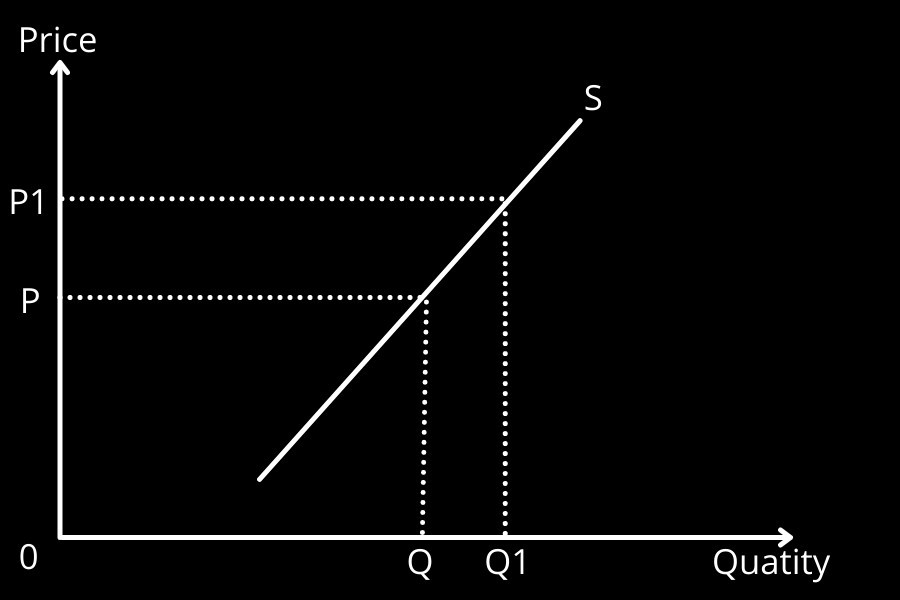There are several important factors that influence determinants of price elasticity of supply. You need to keep in mind that supply elasticity is also known as price elasticity of supply.
Determinants of Supply Elasticity Definition
The law of supply states that if other factors remain the same, there is a direct relationship between the quantity supplied and the price of the item under consideration.
The price elasticity of supply is a measure of the quantitative response to a change in price for a specific product.
Price Elasticity of Supply Calculator
Price Elasticity of Supply= % Change in Quantity Supplied / % Change in Price
- Price Elasticity of Supply > 1: Supply is elastic
- Price Elasticity of Supply < 1: Supply is inelastic
- Price Elasticity of Supply = 0: Supply is perfectly inelastic. (The supply curve is vertical, and demand is unresponsive to pricing.)
- Price Elasticity of Supply = ∞ (infinity): Supply is perfectly elastic. (The supply curve is horizontal, indicating that demand completely changes in reaction to even little price changes.)
Determinants of Price Elasticity of Supply
The factors that determine the elasticity of price supply are as follows.
- Factor mobility of production
- Nature of the goods
- Availability of storage facilities
- The time that takes to adjust the supply
Let’s go over each factor one by one.
1. Factor Mobility of Production
Factor mobility of production refers to the transfer of resources from one production function to another. When the price of a product goes up, the supply of that product can be increased in a short period of time by getting the inputs required for that product from other products.
Thus, when resources can be easily transferred from one production function to another, supply can be increased in a short period of time as the price of that commodity increases.
Example: Factor Mobility of Production
If the price of tea goes up, the land used for coffee production, labor, capital, etc. can be used to make tea. Therefore, once the price of tea goes up, the supply of tea can be increased as resources can be obtained from coffee for tea production.
Accordingly, an elastic supply condition exists as the factor mobility increases.

When resources cannot be easily transferred from one production function to another, supply cannot be increased in a short period of time as the price of that commodity increases.
Example: Resources used in agricultural production cannot be used in industrial production. Primary inputs are used for agricultural production. But secondary inputs are used for industrial production.
Accordingly, an inelastic supply condition exists when the factor mobility is reduced.

2. Nature of the Goods
The nature of the product is the ability to substitute a product factor used to produce a product for another production function.
The supply is elastic if the replacement capacity is higher. The supply is inelastic when the replacement capacity is low.
Example: Nature of the goods
The resources used to make the tables can be easily substituted for the production of the beds. Therefore, when the price of bedding products goes up, the resources used for tables can be replaced with beds. Then the supply of beds will increase and the supply of tables decrease.
Accordingly, if replacement capacity is higher, supply will be elastic.
3. Availability of Storage Facilities
There is an elastic supply for that product if the ability to maintain stocks is high. There is an inelastic supply if inventories are difficult to maintain.
Stock management is key for a product’s continual manufacturing.
Example: Availability of Storage Facilities
Cars may maintain in quantity when it comes to automobile manufacture. However, if we focus on potato production, potatoes cannot be stored in mass for a longer length of time. Because it is difficult to maintain stocks, there is an inelastic supply here.
4. The Time that Takes to Adjust the Supply
The longer it takes to increase supply after a price change, the greater the chance of factor mobility of production, so supply is elastic.
If the time taken to increase supply after a price change is short, there is an inflexible supply for such goods. This is because the factor mobility of production is limited.
Example: The Time that Takes to Adjust the Supply
For agricultural goods, there is an inelastic supply condition. This is because, even if the price of an agricultural item increases, producing that commodity takes a long time. As a result, even if the price of a commodity rises, it is not possible to increase supply immediately.
Important of Price Elasticity of Supply
- The concept of price elasticity of supply is very important for economic analysis.
- It is important for consumers, manufacturers, and economic policymakers to make different decisions.
- Can predicate the responsiveness for the consumer expenditure and producer revenue.
- Can determine a price to maximize the producer revenue.
- Can determine the monopolistic power of a business firm.
- Recognizes the factor mobility.
Rate the article if you learned something new from it. ⭐⭐⭐⭐⭐


